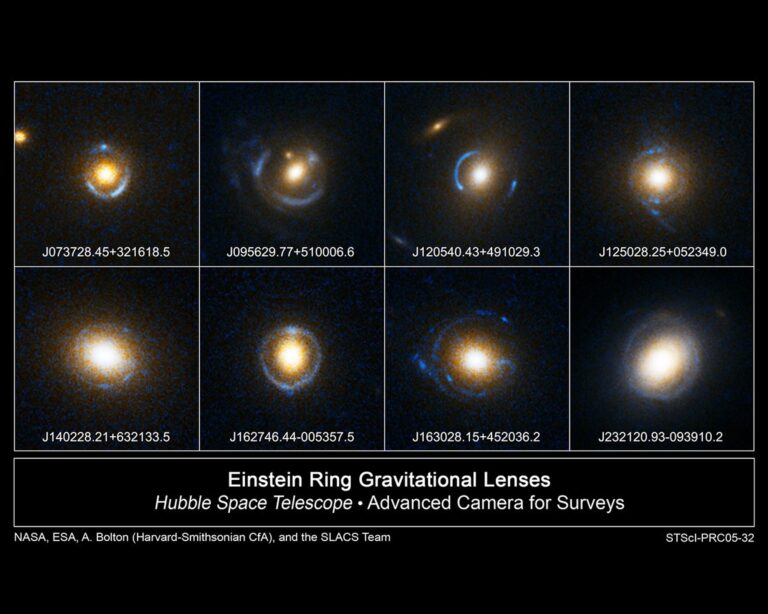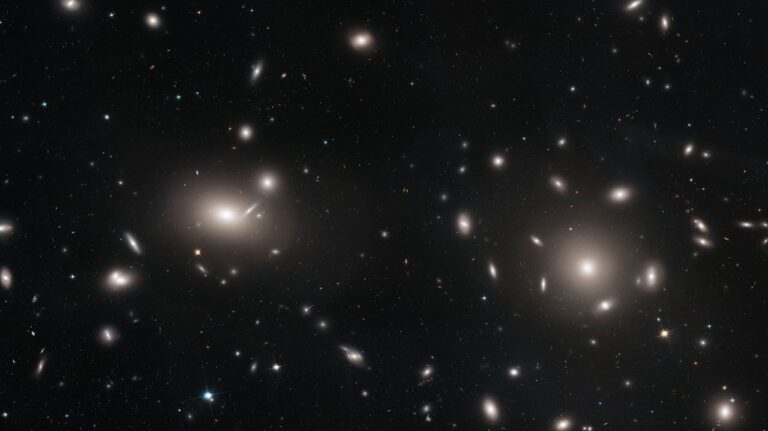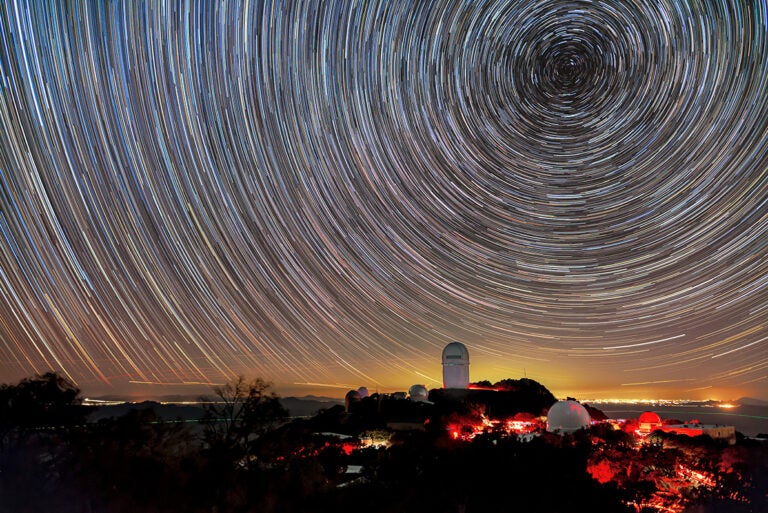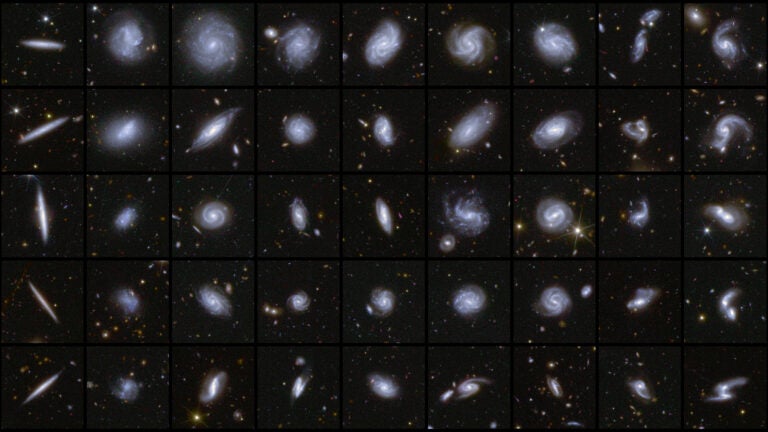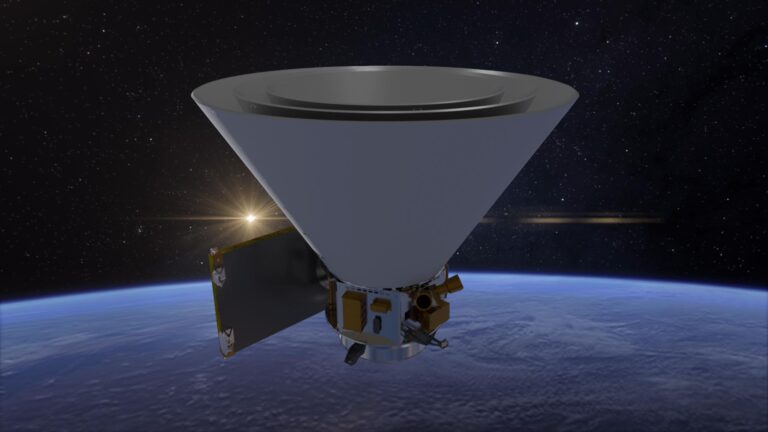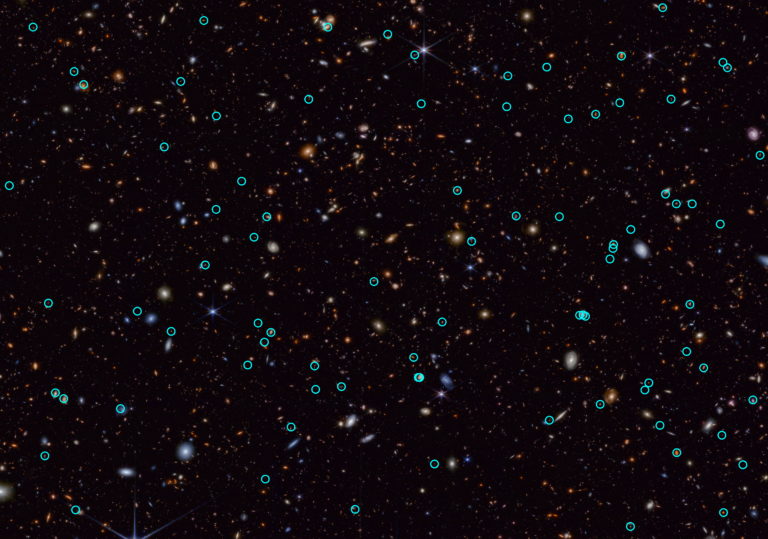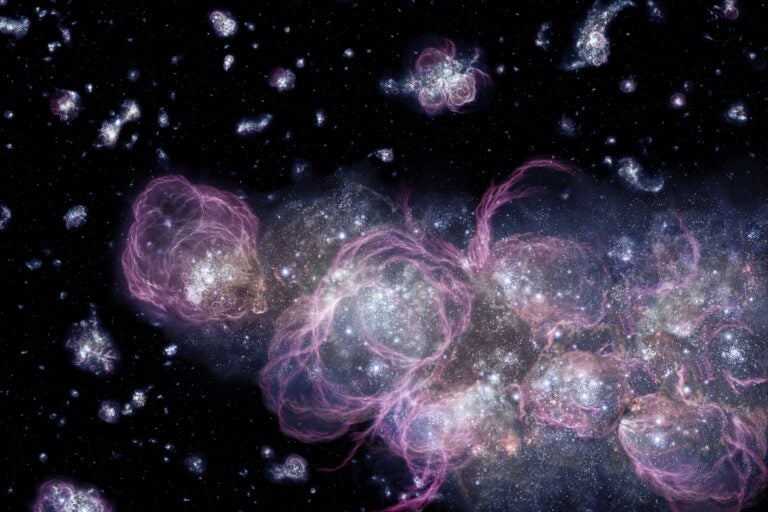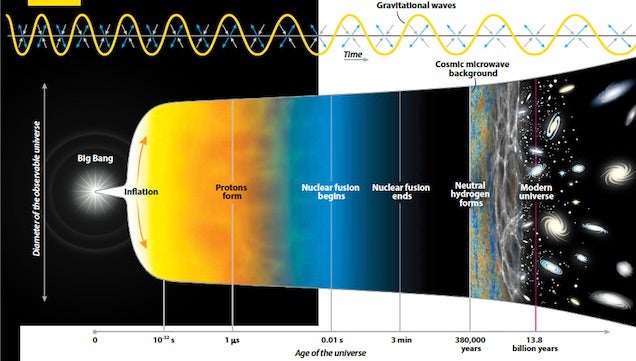
How did it happen?
While the cause of inflation is uncertain, the leading theory postulates it occurred because of an extremely high-energy state in the early universe. This state was left over after the separation of the fundamental forces (gravity, electromagnetism, and the weak and strong nuclear forces), which were unified when the universe began. The extreme amount of energy left the universe unstable, and as it settled to a lower, more stable state, the surge of released energy caused the remarkable expansion.
Inflation also explains why the universe is so uniform. If you gaze skyward with a sensitive radio telescope, you’ll encounter the soft glow of the first light emitted — the cosmic microwave background (CMB) radiation — spread almost evenly across the sky in every direction. The fact that this radiation could be nearly uniform in such disparate regions long puzzled cosmologists because the temperature of the universe — already 90 million light-years across — couldn’t have equalized to a uniform value by the time the light was emitted. Guth’s theory neatly showed that a virtually uniform universe, post-inflation, would create the signature of the CMB almost exactly.
Now, the CMB isn’t perfectly smooth. Across the universe, there are small deviations, measured as slight differences in temperature, typically just a millionth of a degree. These changes originated with tiny quantum fluctuations in the early universe and would eventually become the backbone of galactic structure in the cosmos.
Back in the brief moments before inflation, the universe was hot and dense. While energy was evenly distributed, on a microscopic scale, quantum mechanics dictated that random spots have slightly higher or lower densities. As inflation shook the universe, those tiny over- and under-densities supersized into larger regions. And as the universe evolved, the denser regions became galaxy clusters as they slowly accumulated more and more mass.“If we take a galaxy survey, where we can map out the positions of where galaxies are and how they’re clustered together across the sky, there’s a remarkable agreement in the distribution of galaxies after billions of years and the prediction that you get right at the beginning of the universe,” says Jo Dunkley, a cosmologist
at Princeton University. “We can trace from the early times to the later times, and we’re seeing a very consistent story.”Today, this consistency between the variation in the CMB and the large-scale structures of galaxies across the universe is one of the few pieces of observational evidence for inflation found so far.
“With inflation, the number of observational quantities we have is limited,” says Marc Kamionkowski, a professor and theoretical physicist at Johns Hopkins University. “Therefore, it limits the level of detail at which the model or theory can be specified.”Searching for signs
Finding evidence in the cosmos is challenging because of the length of time that has elapsed since inflation; similarly, laboratory experiments can’t produce the high levels of energy needed to simulate conditions during inflation. However, gravitational waves associated with the universe’s rapid expansion, similar to those triggered by colliding black holes and neutron stars, could offer evidence, if found.
While detectors like the Laser Interferometer Gravitational-wave Observatory are insensitive to inflationary gravitational waves, other searches are underway. One such search uses the Background Imaging of Cosmic Extragalactic Polarization (BICEP) instruments, which have been operating from the South Pole since 2006. Another, dubbed SPIDER, sends balloons high into the atmosphere to look for polarized gravitational waves.“Theory predicts [an inflationary] gravitational wave signature should be detectable in the next five to 10 years. If we detect a signal, it provides an additional data point that suggests we’re on the right track,” Kamionkowski says. “If 10 years from now we haven’t found these inflationary gravitational waves, we’re going to have to go back to the drawing board and very seriously rethink inflation.”In the past four decades, inflation has become a central pillar around which cosmology is organized. But while it tidies up outstanding problems with the Big Bang theory, it remains unverified. And the lack of evidence leaves some scientists with reservations.
“It’s had incredible success at describing what we see . . . and people talk about it as the only option, but many theorists think that we should be considering other options for what happened in the early universe,” Dunkley says.
“I think it’s unlikely that it happened exactly the way we’ve been thinking about it. I don’t think we’ve got the whole story yet.”For now, inflation remains cosmologists’ best theory to explain the current structure and infancy of our universe. Perhaps it will be another half-century before scientists have a clearer understanding of what happened in the universe’s first breathsJust a trillionth of a trillionth of a trillionth of a second after the Big Bang, the infant universe underwent a titanic growth spurt. In the briefest of moments, the universe swelled 1026 times – that’s 100,000,000,000,000,000,000,000,000 – the equivalent of expanding an apple to over 100,000 times the size of the Milky Way.
This brief but dramatic epoch is what astronomers call inflation. As a theory, it has had marked success in recounting the universe’s infancy and describing the cosmos as we see it today. Yet evidence remains scant, and some scientists are raising doubts about its legitimacy.
The birth of a theory
In 1980, Alan Guth, a theoretical physicist and cosmologist at Cornell University, was attempting to solve fundamental problems left unaddressed by the Big Bang theory and modern quantum mechanics. On Earth, we know all magnets, and indeed the planet itself, have two poles: north and south. Yet some particle physics theories suggest that magnets with only one pole – monopoles – should exist. But if the theories are correct, where are all the magnetic monopoles?In an elegant solution, Guth proposed that the early universe, where monopoles were common, had expanded rapidly, scattering the monopoles across such a wide space that they became incredibly rare – so rare that we could search endlessly without ever encountering one. Coining the theory “cosmic inflation,” Guth resolved the monopole problem and simultaneously solved two other major issues with the Big Bang theory.
The density of energy and matter in the universe dictates whether space-time, the fabric of our universe, is flat or curved. Remarkably, in our universe this density is just precisely the specific value, called the critical density, that makes it flat instead of curved – something that cosmologists have a hard time believing happened at random. However, if the universe expanded rapidly, as inflation proposes, any curvature that had existed prior to inflation would now be diluted, creating the flat universe we see today.

